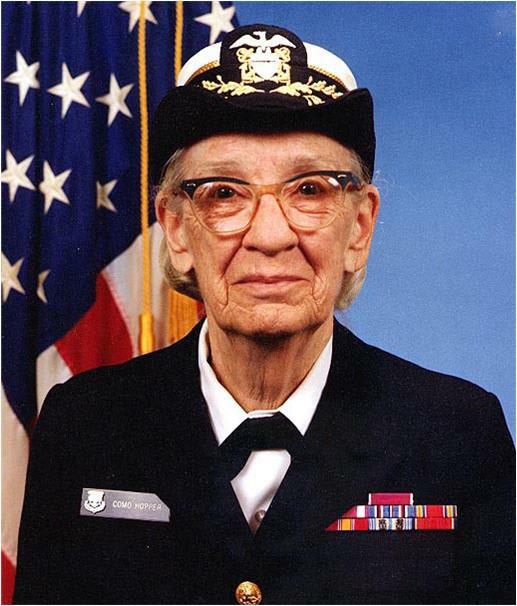Introduction
In the previous article, we explored how to run a pre-trained machine learning model on e-RT3 Plus by using Node-RED. Here, we explore how we can use the widely popular machine learning tool, TensorFlow Lite, on e-RT3 Plus. TensorFlow is an open-source software library for developing solutions in the field of machine learning and artificial intelligence. It is extensively used to create real-time solutions that involve image recognition, analytics, prediction, classification, and optimization, among others. TensorFlow Lite is a light-weight version of TensorFlow, which is specifically optimized for mobile, embedded, and IoT devices to reduce latency and power consumption. When used together with the e-RT3 Plus device, it opens up a wide range of opportunities to optimize industrial automation processes.
In this article, we demonstrate how to run a TensorFlow Lite model on e-RT3 Plus by using an open-source example from GitHub. This example uses a Python script to run a pre-trained TensorFlow Lite model to recognize objects in the input image.
First, we download the TensorFlow repository and build a TensorFlow Lite image customized for e-RT3 Plus. Then, we install TensorFlow Lite on e-RT3 Plus. Next, we download the pre-trained model, Python script, and input image, and then customize the Python script for e-RT3 Plus. Finally, we run the script which uses the model to recognize objects in the input image.
The following figure shows the input image used in this example.
Workflow
The following figure shows the workflow for running a TensorFlow Lite model on e-RT3 Plus.
Prerequisites
The prerequisites for running a TensorFlow Lite model on e-RT3 Plus are as follows:
- The e-RT3 Plus device
- A computer to communicate with e-RT3 Plus
Getting Started
Once you have your setup ready, follow these steps to run a TensorFlow Lite model on e-RT3 Plus:
- Install dependencies
- Generate TensorFlow Lite wheel file from source code
- Create virtual environment and install TensorFlow Lite
- Run a test model
Install dependencies
Before installing TensorFlow Lite, we must install the following dependencies:
-
CMake
CMake is a platform agnostic and open-source software used for generating makefiles in a custom compiler environment.
-
pybind 11
pybind11 is a library that is used for exposing C++ types in Python and vice versa.
Follow these steps to install CMake and pybind11:
- Start PuTTY.
- Log on to e-RT3 Plus.
-
To download and extract the CMake library, run the following commands.
wget https://github.com/Kitware/CMake/releases/download/v3.17.1/cmake-3.17.1.tar.gz tar zxvf cmake-3.17.1.tar.gz -
To build the libraries for running CMake, run the following commands.
sudo apt update sudo apt install libssl-dev -
To build the CMake library, run the following commands.
cd cmake-3.17.1/ ./bootstrap makeNote: It may take a while to build the CMake libraries.
-
To install CMake, run the following command.
sudo make install -
To confirm the installation, run the following command.
cmake --versionThe CMake version is displayed, indicating that CMake is installed successfully.
-
To exit the
cmake-3.17.1directory, run the following command.
cd .. -
To install pybind11, run the following command.
sudo pip3 install pybind11pybind11 is installed.
Generate TensorFlow Lite wheel file from source code
Since e-RT3 Plus is an Edge device, we must build a TensorFlow Lite wheel file from the TensorFlow source code.
Note: The wheel file eliminates the need for recompiling the software during each installation cycle, thus reducing the installation time.
To customize the TensorFlow Lite build for e-RT3 Plus, we must tweak a few settings in the build file.
Follow these steps to build a TensorFlow Lite wheel file for e-RT3 Plus from the TensorFlow source code:
-
In the PuTTY terminal, download the TensorFlow source code from the GitHub repository by running the following command.
git clone https://github.com/tensorflow/tensorflow.git tensorflow_src -
Navigate to the directory that contains the TensorFlow repository and checkout revision 2.6 by running the following commands.
cd tensorflow_src git checkout -f -b r2.6 origin/r2.6 Navigate to the directory
tensorflow_src/tensorflow/lite/tools/pip_package/.-
Modify the build file
build_pip_package_with_cmake.shby performing these steps:-
Add the following command at the top of the file.
BUILD_NUM_JOBS=1 In the file, search for the string
native).-
Add
-DTFLITE_ENABLE_XNNPACK=OFF \to the list of build flags for the cmake command. The modified code must be in the following format.
native) BUILD_FLAGS=${BUILD_FLAGS:-"-march=native -I${PYTHON_INCLUDE} - I${PYBIND11_INCLUDE}"} cmake \ -DCMAKE_C_FLAGS="${BUILD_FLAGS}" \ -DCMAKE_CXX_FLAGS="${BUILD_FLAGS}" \ -DTFLITE_ENABLE_XNNPACK=OFF \ #Add this line "${TENSORFLOW_LITE_DIR}" ;; Save and close the file.
-
Navigate to the directory
tensorflow_srcby using thecdcommand.-
Generate a wheel package for installing TensorFlow Lite on e-RT3 Plus by running the following command.
PYTHON=python3 tensorflow/lite/tools/pip_package/build_pip_package_with_cmake.sh nativeThe wheel file is generated in the following directory:
tensorflow/lite/tools/pip_package/gen/tflite_pip/python3/dist/
Create virtual environment and install TensorFlow Lite
To install the generated wheel file, we must first create a Python virtual environment.
Follow these steps to create a Python virtual environment and install the wheel file:
- Navigate to the home directory by using the
cdcommand. -
To create a Python virtual environment, run the following commands.
sudo apt install python3-venv python3 -m venv tf-env --system-site-packages source tf-env/bin/activate -
To install the wheel package, run the following command.
pip install wheel -
To install image processing libraries, run the following command.
sudo apt install libtiff5-dev libjpeg8-dev libopenjp2-7-dev zlib1g-dev libfreetype6-dev liblcms2-dev libwebp-dev tcl8.6-dev tk8.6-dev python3-tk libharfbuzz-dev libfribidi-dev libxcb1-dev -
To install the generated wheel file, run the following command.
pip install cython numpy tensorflow_src/tensorflow/lite/tools/pip_package/gen/tflite_pip/python3/dist/<TF_WHEEL_FILE> --no-cache-dir
TensorFlow Lite is installed on e-RT3 Plus.
Run a test model
Now that we have installed TensorFlow Lite on e-RT3 Plus, we can test a TensorFlow Lite model.
Follow these steps to run a test model on e-RT3 Plus:
Download the object recognition code from GitHub
Follow these steps to download the sample code:
-
To create a folder to store the downloaded files, run the following command in the PuTTY terminal.
mkdir tmp -
To download the input image, run the following command.
The input image can be an arbitrary image that contains identifiable objects.
curl https://raw.githubusercontent.com/tensorflow/tensorflow/master/tensorflow/lite/examples/label_image/testdata/grace_hopper.bmp > tmp/grace_hopper.bmp -
To download the pre-trained TensorFlow Lite model and labels file, run the following command.
curl https://storage.googleapis.com/download.tensorflow.org/models/mobilenet_v1_2018_02_22/mobilenet_v1_1.0_224.tgz | tar xzv -C tmp curl https://storage.googleapis.com/download.tensorflow.org/models/mobilenet_v1_1.0_224_frozen.tgz | tar xzv -C tmp mobilenet_v1_1.0_224/labels.txt -
To copy the labels file to the directory
tmp, run the following command.The
labels.txtfile contains the names of the objects that the pre-trained model is able to recognize.
mv tmp/mobilenet_v1_1.0_224/labels.txt tmp/ -
To download the Python code that uses the model to identify objects in images, run the following command.
curl https://raw.githubusercontent.com/tensorflow/tensorflow/master/tensorflow/lite/examples/python/label_image.py > label_image.py
Modify the Python script
The downloaded code in label_image.py is created for TensorFlow. Hence, we must modify it to use for TensorFlow Lite.
Follow these steps to customize the Python script for TensorFlow Lite:
- Open the Python script
label_image.pyin an editor. - In the file, search for
import tensorflow as tfand replace it withimport tflite_runtime.interpreter as tflite. - Next, search for
interpreter = tf.lite.Interpreter(model_path=args.model_file, num_threads=args.num_threads)and replace it withinterpreter = tflite.Interpreter(model_path=args.model_file, num_threads=args.num_threads). - Save the file and close it.
Execute the sample code
To execute the Python script, run the following command:
python3 label_image.py --model_file tmp/mobilenet_v1_1.0_224.tflite --label_file tmp/labels.txt --image tmp/grace_hopper.bmp
The Python script is executed and the results are displayed in the following format.
0.919721: 653:military uniform
0.017762: 907:Windsor tie
0.007507: 668:mortarboard
0.005419: 466:bulletproof vest
0.003828: 458:bow tie, bow-tie, bowtie
time: 3208.580ms
By analyzing the results, and comparing it with the input image, we can infer that a military uniform has been detected in the image with a confidence score of 0.919721 or 91%. Similarly, the Windsor tie, mortarboard, bulletproof vest, and bow-tie are detected with different confidence scores.
Finally, the processing time for recognizing these objects is displayed.
Conclusion
With a few modifications to the TensorFlow Lite build settings, you can quickly install and run TensorFlow Lite models on e-RT3 Plus. This opens the door for implementing a wide range of machine learning and artificial intelligence solutions on e-RT3 Plus.









Latest comments (0)